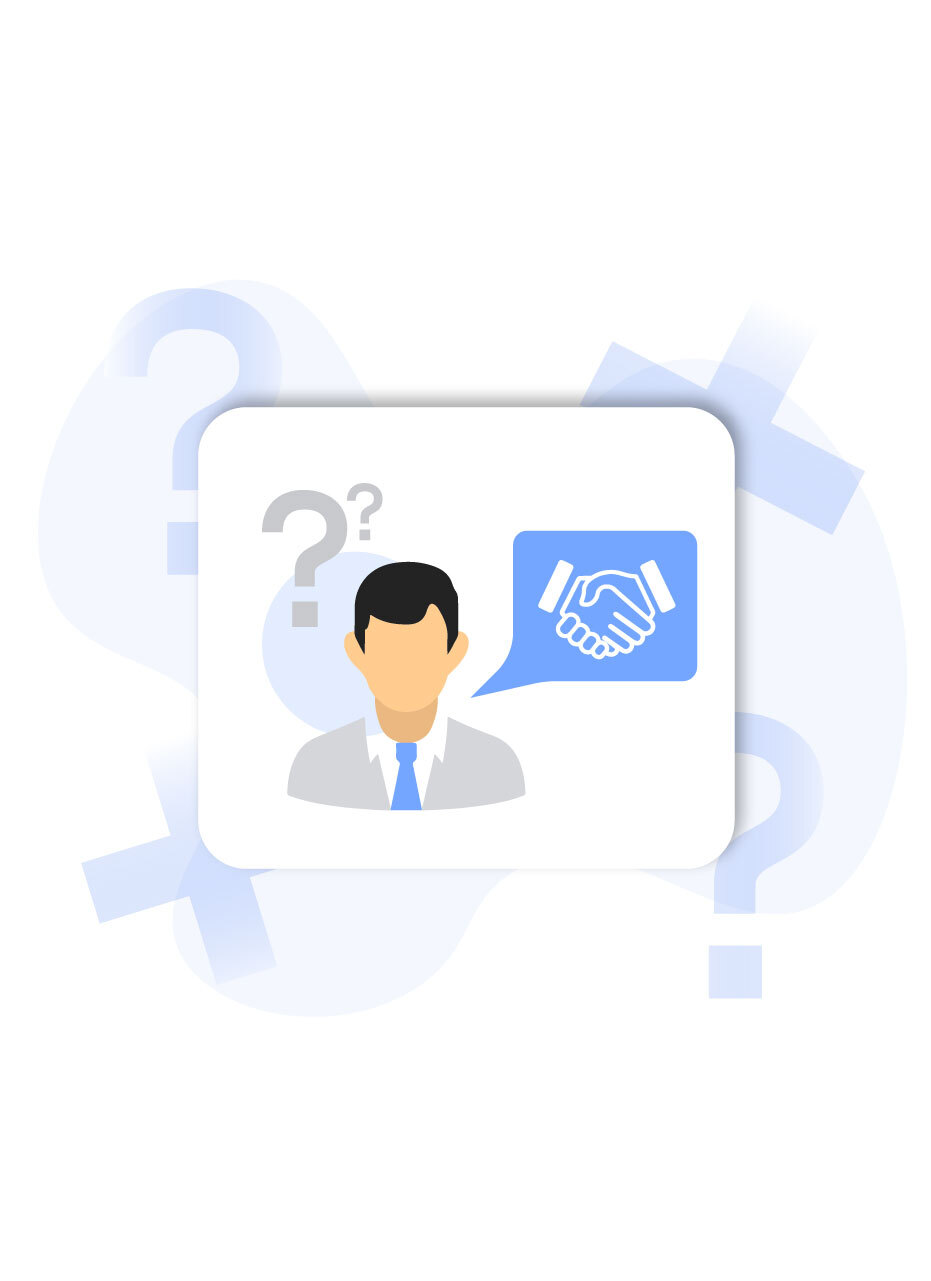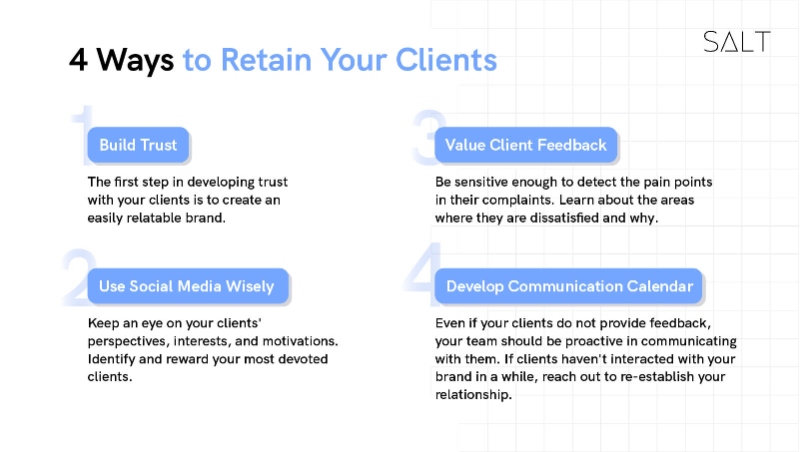
Client retention is critical for the success of any business. The value you place on your clients allows you to forecast revenue and budget for providing engaging content at all times. Client retention is not only cost-effective, but it is also a great branding exercise because it allows you to delight your clients and turn them into brand ambassadors - if they like you, they will refer others to you. Here are 4 ways to retain your clients and build meaningful relations with them:
What is Client Retention?
Before we discuss the ways to retain your clients, let’s have a look at what client retention is.
The process of attracting repeat clients and keeping them from switching to a competitor is known as client retention. It is an important aspect of business strategy that can assist companies in gaining a competitive advantage. Companies implement various ways to reduce the number of clients lost in a given period and improve their experiences to ensure that they remain loyal to the business.
Loyal clients are more likely to tell others about their positive experiences with the company, and they are also more likely to buy from the company again in the future. According to data compiled by Harvard Business Review, onboarding a new client is 5x to 25x more expensive than retaining an existing client. Profits can be increased by 25% to 95% with a simple 5% increase in retention rates.
4 Ways to Retain Your Clients

Build Trust
The first step in developing trust with your clients is to create an easily relatable brand. Having something in common fosters trust, which is essential for developing a strong relationship and, as a result, a successful business. Given the importance of trust in your business, you must make conscious efforts to foster trust. You give new and existing clients the opportunity to trust you when you initiate relationships with them.
According to research, 82% of clients who trust your brand will continue to use it, and 83% of clients who trust your brand will recommend it to others.
Clients will switch to your competitors if they discover you are untrustworthy, on the other hand.
Nothing turns off clients like a bad experience. What’s worse? They will spread bad news to others.
Use Social Media Wisely
After the initial sale, social networks are extremely useful for maintaining client contact. Social media provides excellent opportunities to engage your clients and build trust by displaying the human side of your company. Keep an eye on your clients' perspectives, interests, and motivations. Identify and reward your most devoted clients. Email automation can be used to send updates or offers to all of your clients at once. You can also send the email using an RSS feed at a predetermined frequency, eliminating the need to manually update the content or remember to click "send."
Consumers are using social media platforms to ask questions, file complaints, and resolve product issues. Use it to demonstrate how your company listens to and cares about its clients.
Value Client Feedback
Knowing how clients feel is one of the most important aspects of client retention. When you understand your clients' feelings and what they like and dislike, you can act on their feedback, improve your approach, and better meet their needs. Many clients value the quality of your service - friendliness, comfort, and familiarity - just as much as the quality of your product. Remember that 70% of purchasing experiences are determined by how the client feels they are being treated. When clients have the opportunity to express themselves, they reveal their thoughts and feelings about your brand.
Be sensitive enough to detect the pain points in their complaints. Learn about the areas where they are dissatisfied and why. Making changes in those areas will help turn things around. Make your company appear to your clients as a welcoming and accommodating partner. For starters, instead of making predictions based on general demographics or your personal perceptions, try customising your offers based on actual client behaviour using analytics.
Develop Communication Calendar
Even if your clients do not provide feedback, your team should be proactive in communicating with them. If clients haven't interacted with your brand in a while, reach out to re-establish your relationship. Consider using a communication calendar to manage client engagements and upsell and cross-sell opportunities. Brands that maintain a communication calendar typically find it easier to engage with their clients. Because frequent communication eliminates post-purchase doubts, increases trust, and persuades the client to return. According to recent statistics, organisations that communicate with their clients more than 10 times per year profit 300% more than those that do not communicate with their clients.
Conclusion
That concludes our guide on how to retain your clients and develop meaningful relationships. Clients are at the heart of any business. A business cannot succeed without them. It is critical to invest in client retention after you have used resources to acquire clients.
You can accomplish this by implementing client relationship-building strategies. SALT can assist you in developing meaningful relationships with your clients by providing a one-stop shop for all of your banking needs.


